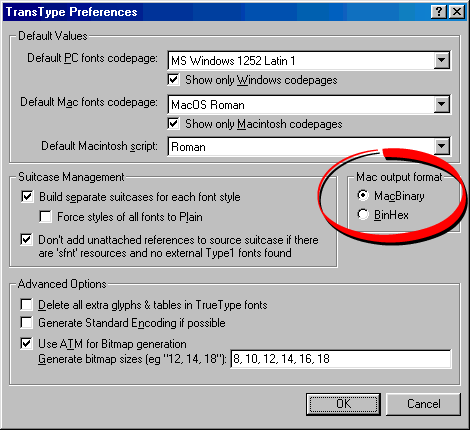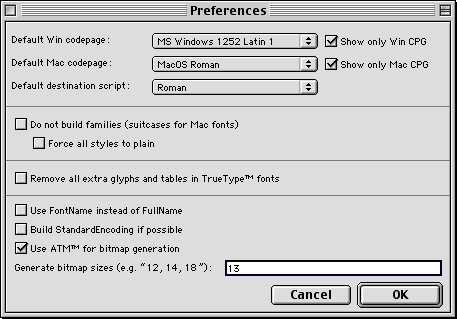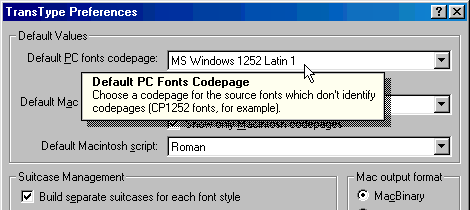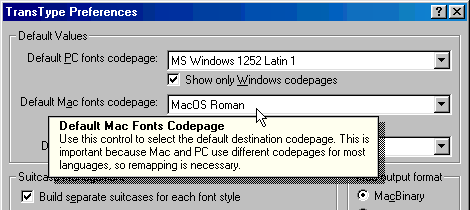|
|
Understanding
The TransType Interface
Part Two |
 |
|
|
|
|
|
|
To find out more about TransType and where
to get it, click
here
3. In the PC version,
the preferences dialog shows that you can select between
MacBinary and BinHex for Mac®
file output (circled below).

4. In the Mac version,
there is no option for saving files in MacBinary or
BinHex format because there is no reason to. You can
save PC files directly on the Macintosh®.
You can't save Macintosh fonts directly on the PC (more
here on the Mac file system). Mac fonts are stored
in the resource fork and, as such, require that they
be encoded using MacBinary or BinHex (more on these
formats mentioned
here.

5. When you click the "?" symbol
for context-sensitive help, then click the "Default
PC fonts codepage", a close inspection reveals
that this preference is for the source
font encoding (the font in the left pane of the TransType
window).

6. The context-sensitive
help for "Default Mac fonts codepage" reveals
that this preference is for the destination
font encoding (the font in the right pane of the TransType
window). Thus, for these preferences, if the destination
font is a a PC font (and the source font is a Mac font)
then the destination encoding will be incorrect and
you will have to override the defaults (click
here for an example).

Click
Here To Continue...
|